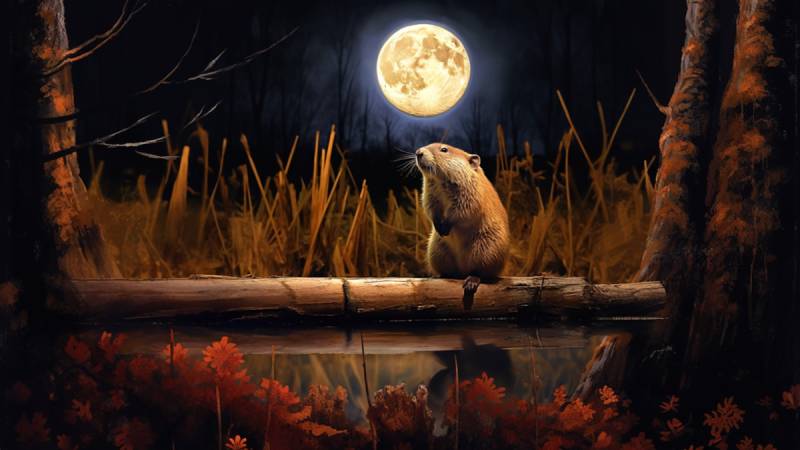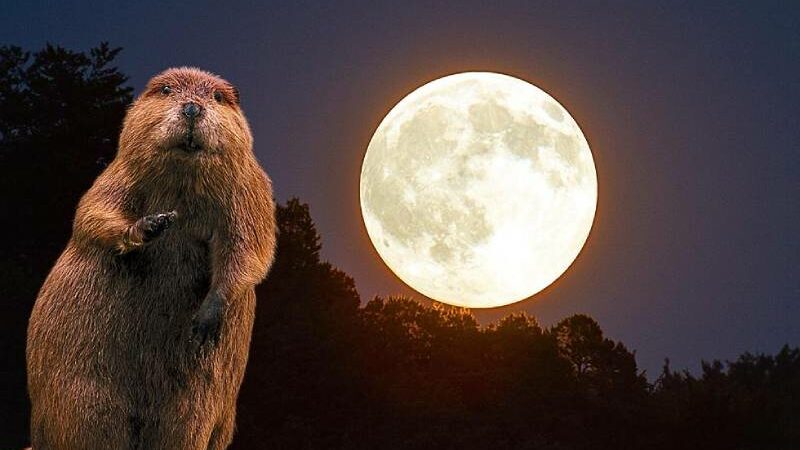Different tribes of Native Americans used different methods to measure time, such as seasons and lunar months.
Different people recognised five seasons, while others only recognised four. With modifications made in line with the seasons, a year may be defined by counting 12 or 13 Moons. Every tribe had a moon name that described events or actions that occurred during that time and frequently changed annually.
Native American moon names were taken up by colonial Americans and incorporated into the Julian and then the Gregorian calendars.
For colonists and Algonquin tribes, November’s full moon was known as the Beaver Moon, also called the Frost Moon.
It was also the time of year when beavers were most active, which meant that traps were set before marshes froze in order to acquire warm winter furs. Beaver fur was essential for making warm winter clothing.

In the past, beaver trapping was connected to the Beaver Moon. The Beaver Moon was frequently a supermoon, appearing larger and brighter due to its proximity to Earth around perigee, even though beavers are less relevant today. Nevertheless, the tradition endures.
It was a prime time for trapping because at this point, mature beavers were also sought after for their thick pelts. Because to the lowering temperatures, this full moon is also known as the Frost Moon or Freezing Moon.
Understanding these customs offers valuable understanding of the cultural importance and customs of Native American tribes and early American colonists with regard to seasonal activities and lunar cycles.
When is Beaver Moon going to peak?
The Beaver Moon will be nearly full when it reaches its peak on November 27 at 04:16 EST, which is shortly after sunset on the day before. The best time to watch is during moonrise on the day of maximum light (North America) or the night after (Europe).
When the Beaver Moon reaches its fullest and brightest at dusk on the eastern horizon, it may seem orange for 15-20 minutes because of atmospheric conditions that are comparable to those of a sunset.
To observe, find a high point with an easterly orientation and head to a clear-sky easterly shore. Though binoculars can improve the viewing experience, unassisted eyesight is sufficient.
- Jerry Rice Award History: Every Winner of the FCS Freshman Award - December 13, 2025
- When Do New Episodes of Taylor Swift’s The End of an Era Drop? | Schedule, Dates & Updates - December 13, 2025
- When Does ‘Matlock’ Return? 2026 Premiere Date Guide - December 12, 2025





